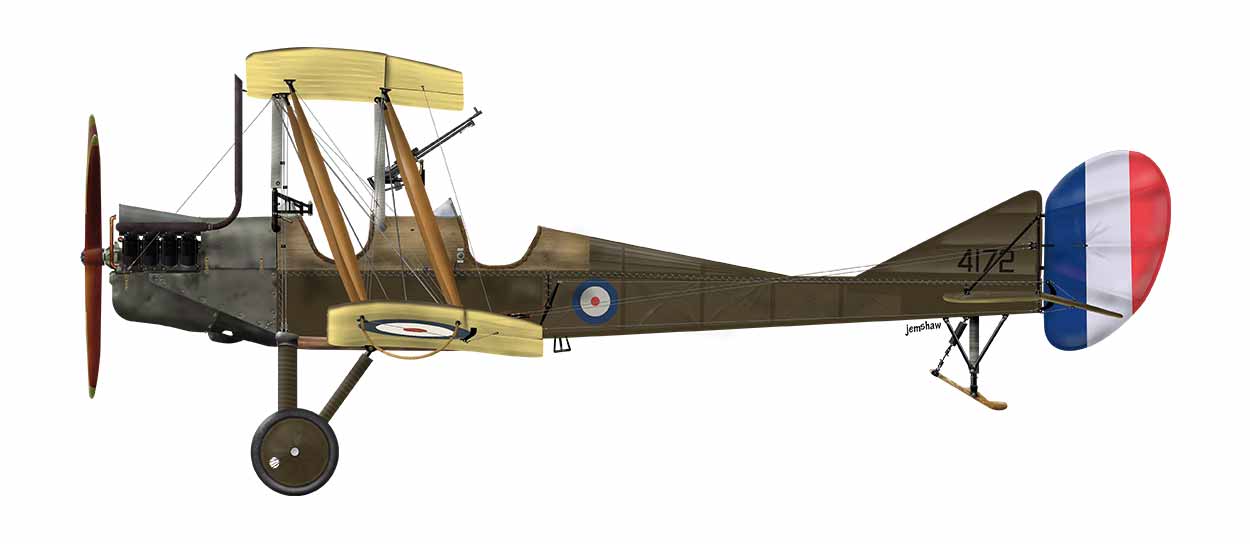| | | The Larks | | | All This Way for a Shilling | | | Yellow Impi | | | Back Burner | | | Other Nonsense | | | About Me |



Royal Aircraft Factory B.E.2c (1912)
"Kalt Fleisch"
Our first sight of the B.E.2 in The Larks describes it as "unlovely and unloved". That pretty much sums up widespread opinions of a type that was already seriously outdated at the start of the war. The Germans called it Kalt Fleisch - Cold Meat - such was their regard for its chances in combat. Capable of only a little over 70mph, unmanoeuvrable and equipped with a single gun with a disastrously limited field of fire, it was employed for much of the war as an artillery spotter.
History may have been unjust to the BE.2. When it made its debut in February 1912 it was regarded as an advanced, capable fighter - or "scout" as they were known at the time. But such was the pace of technological development, by the outbreak of hostilities it was already too slow and unwieldy to fulfil a front-line combat role, earning the common soubriquet "bloater". Nevertheless, it served commendably throughout the war, where its stability - an impediment to a nimble fighter - made it an excellent photographic and observation platform.
Like most light aircraft of the time - and for many years after - the B.E.2 was flown from the rear seat, something that many find surprising. The reason is that the centre of gravity is critical on all aircraft, and more so on lighter machines. In a two-seater, there may or may not be a person in the second position. Placing their seat as close as possible to the centre of gravity minimises the shift of fore-aft balance. In the case of the B.E.2 however, sitting between the wings severely limited the observer's field of view and fire. Later models placed the pilot in the forward pit. Presumably this meant that solo flights would require ballast in the rear cockpit.
General |
|
| Country of origin: | Great Britain |
| Crew: | 2 |
| Purpose: | Reconnaissance, bomber, trainer, fighter |
| Powerplant: | 1 × RAF 1a V-8 air-cooled piston engine, 90 hp (67 kW) |
| Armament: | 1 × .303 in (7.7 mm) Lewis machine gun |
Performance |
|
| Maximum speed: | 116km/h (72mph) |
| Maximum ceiling: | 3,000m (10,000 ft) |
| Range: | 320km (200 miles) (est) |
Dimensions |
|
| Wingspan: | 11.28m (37ft 0in) |
| Length: | 8.31m (27ft 3in) |
| Height: | 3.4m (11ft 1in) |
| Weight: | 621kg (1,370 lb) |
Figures from Wikipedia
My Picture
This was my first attempt at illustrating the aircraft of The Larks. I wanted it to look well-used, though I now realise it's actually far too pristine. I may return to it in the future and dirty it up a bit.
Notice the empty gun mounting forward of the observer's cockpit. The single Lewis gun could be moved between rear, front-left and front-right positions to ameliorate - to some extent at least - the limitations to the observer's field of fire. The gun weighed 13kg (28 pounds) and was nearly 1.3m (4ft 3ins) long. Standing up to thread this between struts and flying wires, and clipping it to a mounting that might yield two or three seconds of accurate fire represents a theoretical solution that must have appealed to someone. In practice, I suspect that Cubby MacConnachie wasn't the only flier who dropped it over the side.
Pages
Copyright © 2016-2024, Jem Shaw

